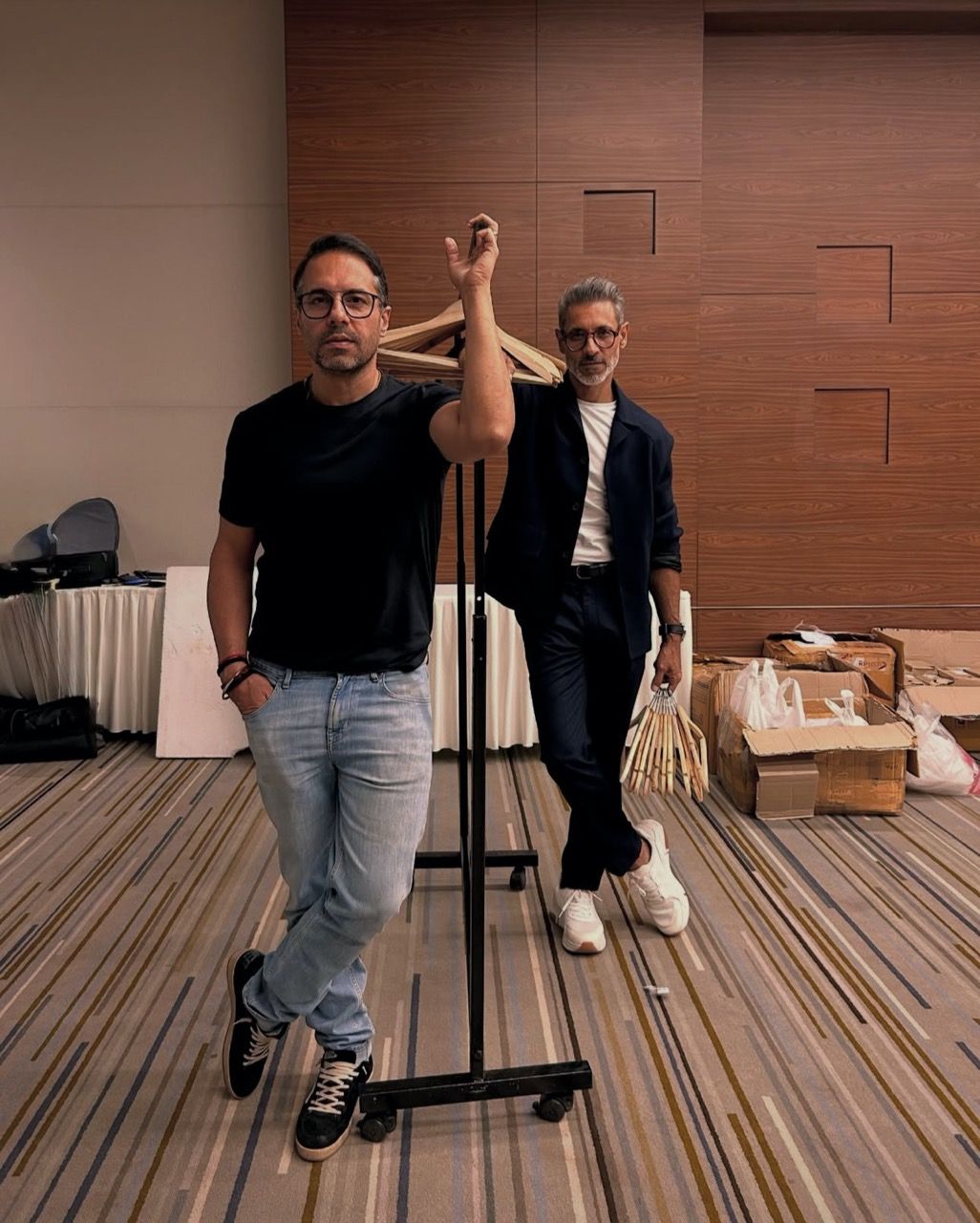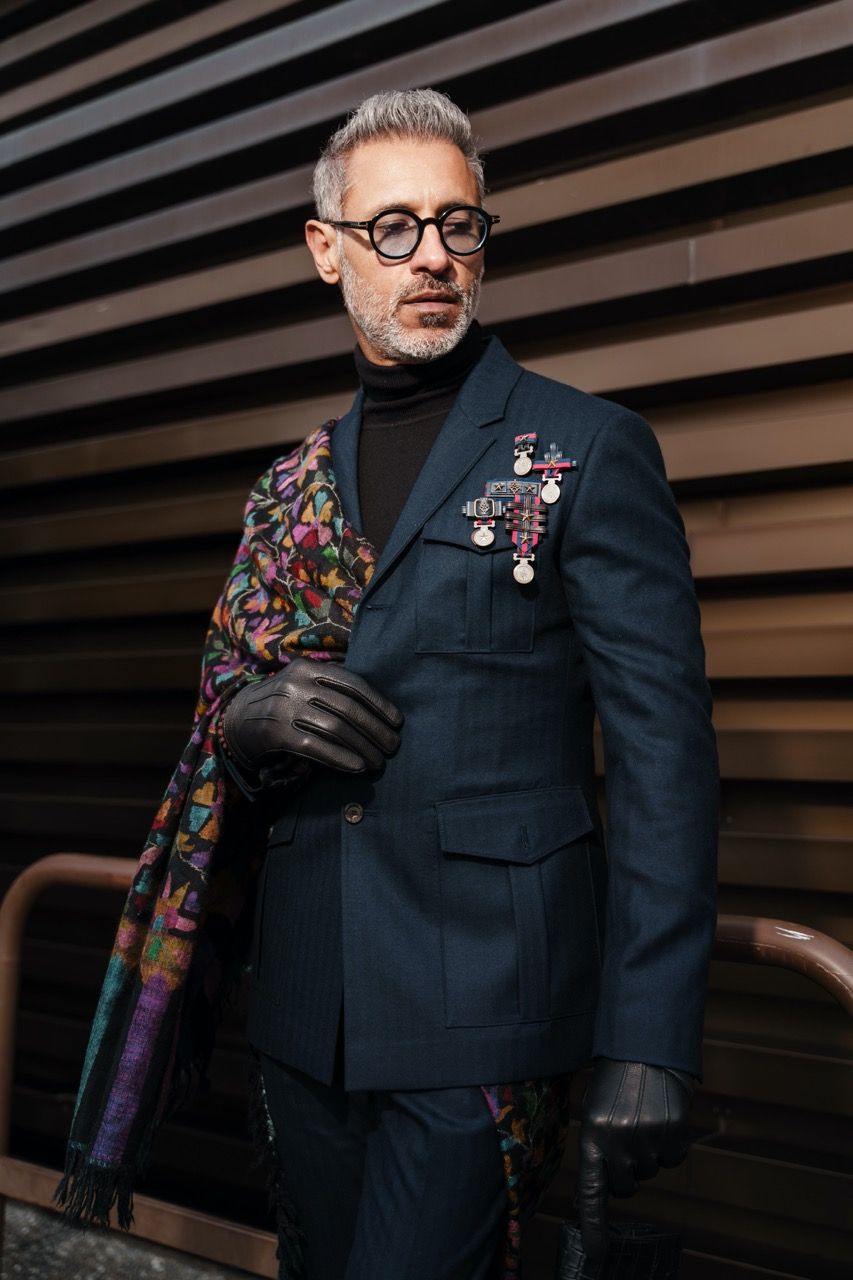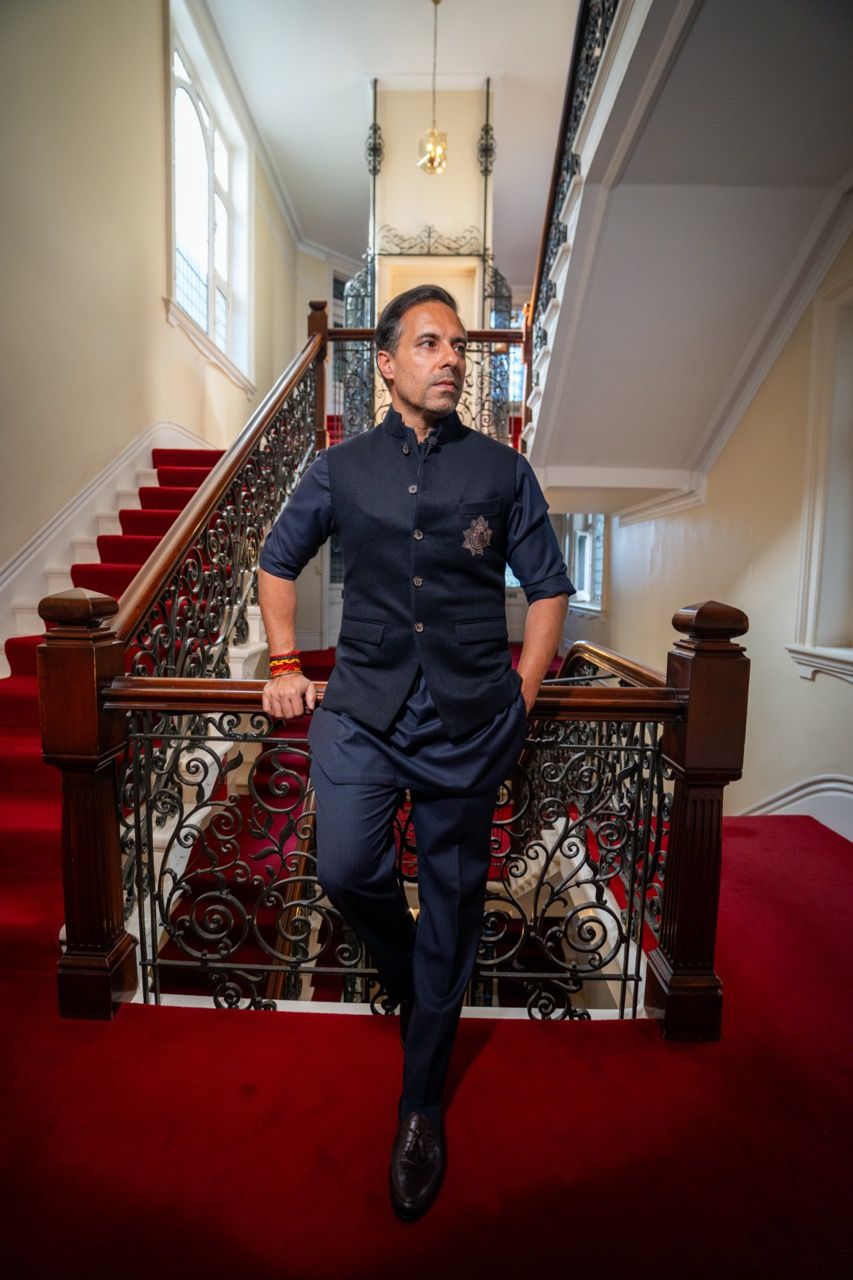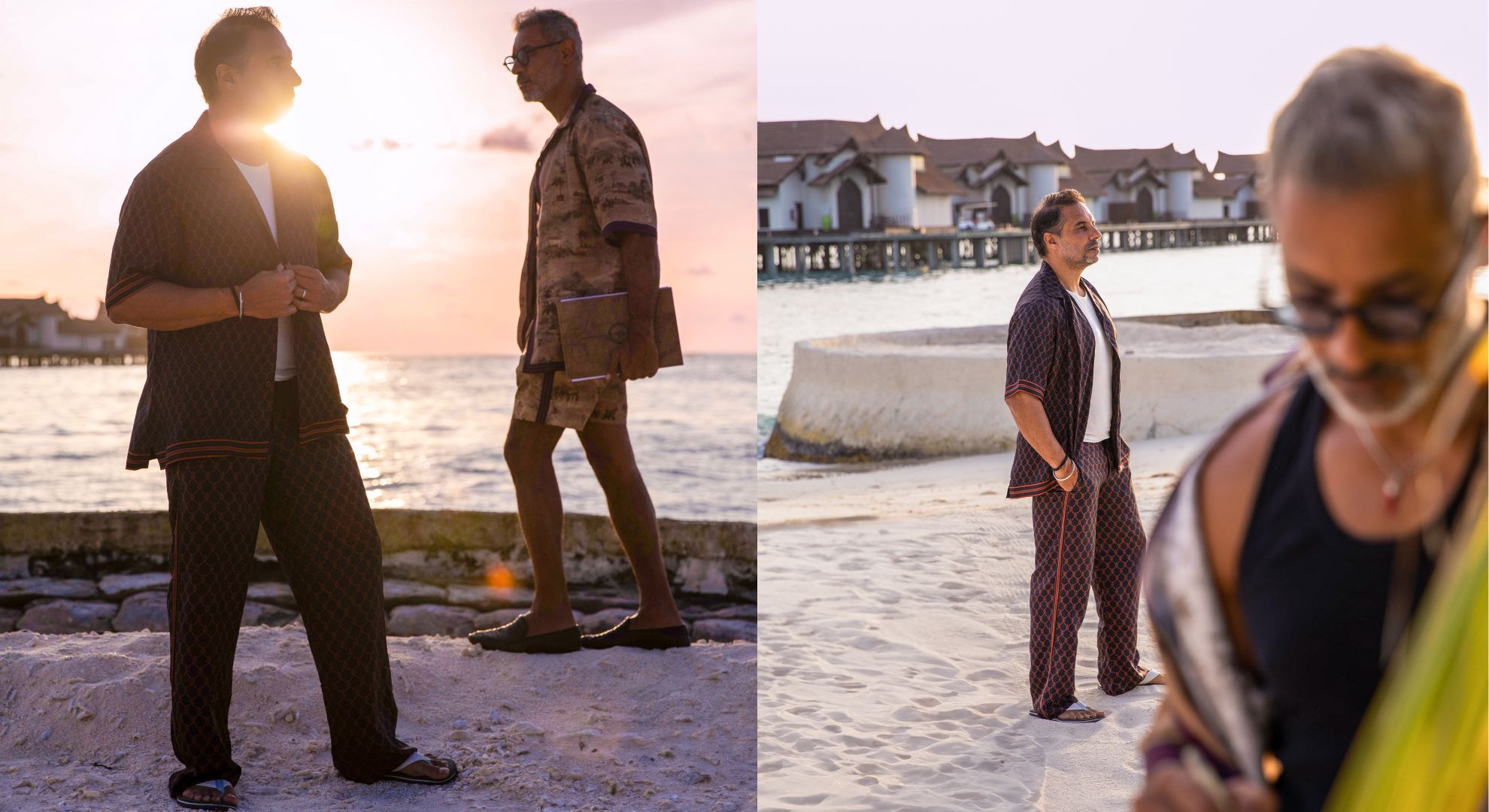The myth of the always-dressed designer is hard to shake. Sharp tailoring, brooches with a backstory, looks that never let up. But Shantnu and Nikhil Mehra aren’t trying to live up to the stereotype. If anything, they’re rewriting it. Over the past two decades, the brothers have turned Shantnu & Nikhil into a label built on modern Indian uniformity—military-inspired bandhgalas, architectural draping, structured layers that whisper rebellion. Their prêt spin-off, S&N by Shantnu & Nikhil, channels the same DNA with a more democratic edge. But what does all that look like off the clock?
We sat down with the duo for a full-style download. The result: a mix of utility and instinct, rhythm and rebellion, function and finesse. And yes, joggers. Lots of joggers.
What’s your off-duty look when no one’s taking photos?
Shantnu: Relaxed cargos, classic polos, and usually some form of athleisure. I like function over fuss. Comfort doesn’t have to mean compromise. I’m not one for overdressing, but I do believe in accessorising smartly. That’s how you break the myth—by choosing with intention, not excess.
Nikhil: Structured ease, always. Even when I’m off-duty, I lean towards sharply tailored separates that move with intent. I don’t believe in switching style on and off. It’s built into how I function. Even casual should feel considered.

Do people expect designers to always dress a certain way?
Nikhil: Absolutely. There’s this unspoken pressure to look like you just walked out of your own runway show. But for me, style is an extension of self-expression. It reflects where I am creatively, through travel, emotion, or a shift in rhythm. Some days that means a crisp silk shirt and tailored trousers. Other days, it’s pared-back layers with structure. I prefer a quiet kind of sartorial presence. Disciplined, intentional, and always honest to the moment I’m in.
Shantnu: The stereotype exists, yes. But I’ve never been interested in overdoing it. Style should be intuitive, not theatrical. You can still look pulled together without feeling like a costume. Fit well, accessorise smartly, and wear what works for you.
Has your personal style changed because of your brand or in spite of it?
Shantnu: What’s evolved is how we express it. I’ve become more dynamic with my wardrobe. Crest-detailed kurtas for Diwali, relaxed shirts when I want to keep it simple, sharply tailored jackets for events. I dress for moments that matter.
Nikhil: It has changed with the brand. Our visual language has sharpened, and so has our personal aesthetic. We’ve moved towards a more precise, distilled expression of who we are. And our wardrobes reflect that. The attitude is the same—it’s just better edited.

Is there one item in your wardrobe that feels like a second skin?
Nikhil: A bandhgala with a military nuance. Structured, timeless, and quietly authoritative. I’ve worn it across seasons and stages of life. It doesn’t just fit—it defines.
Shantnu: My Lululemon joggers. I have them in every version. They’re my go-to. They feel like a uniform, just one that happens to be absurdly comfortable.
Do you ever design something that feels too bold even for you to wear?
Nikhil: Often. And that’s exactly where the magic lies. The pieces that make us pause or second-guess are usually the ones holding something vital. For us, design isn’t about playing safe. It’s about pushing against what feels expected. Sometimes that means creating something we’re not immediately ready to wear. And that’s a good thing. It means the work is doing what it’s meant to—unshackling tradition, one silhouette at a time.

Which designer’s personal style do you secretly admire?
Shantnu: Ralph Lauren. There’s legacy in everything he wears. No gimmicks, just timeless storytelling. A man who lives his brand, decade after decade, and never once looks like he’s trying too hard.
Is dressing yourself harder or easier than dressing a client?
Nikhil: Dressing myself is second nature. I know my proportions, my textures, my rhythm. It’s instinctual. But dressing a client? That’s where it gets layered. It’s never just about the occasion. Fit, form, and detail all speak to identity. The real challenge is decoding someone else’s narrative and aligning it with our sartorial language. That’s the actual craftsmanship.






